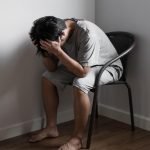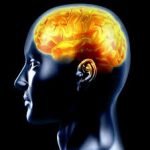Category: Mental Health

By Angela Couch, RN, MSN, PMHNP-BC
Psychiatric Nurse Practitioner, Lindner Center of HOPE
Anxiety is a common symptom. Anxiety is a part of everyone’s lives, we have all experienced it to one degree or another. Believe it not, anxiety serves some useful purposes. Anxiety can help give you the drive to make a change, or complete task on time.Anxiety can activate the fight or flight instinct, in a “potentially” dangerous situation, giving you the drive to get out of there, or do something to prevent harm. Anxiety can occur when you are enduring multiple stressors, or there is uncertainty, and it’s not entirely unexpected.
For instance, say you hear layoffs are coming in the company, and you’re not sure if your department will be affected. You may experience physical symptoms of anxiety (which could include racing heart, nervous stomach, sweating, tremor, nausea, shortness of breath, and more), and you might also experience worry. COVID-19…yup, that can cause some anxiety, or worry, too! Situational anxiety is a part of life, and often can be managed by rational self-talk, problem-solving, and various positive self-care strategies. (For more on that, see some of our other recent blog articles, for lots of helpful ideas!) So how do we know when the anxiety is more than just “normal” or to be expected, and when to seek help?

According to the National Comorbidity Study Replication, about 19.1% of U.S. adults will have had an anxiety disorder in the past year, and 31.1% experience an anxiety disorder in their lifetime. In other words, it’s pretty common! There are various types of anxiety disorders, and most have an underlying common thread– difficulty in accepting uncertainty in some form. So how do you know if you may need to seek further assessment or help for anxiety, if it’s really so common? If everyone gets it, is it really a problem that requires treatment? The answer is yes, it might. Some symptoms that may indicate problematic anxiety include:
* Feeling “paralyzed” by fear.
* Anxiety is causing you to avoid things you used to be able to do without anxiety, or things that are important to you (this could include social activities, leaving your house, going to your job, driving, engaging in spiritual activities, etc.).
* You have difficulty staying present “in the moment”, which may repeatedly distract you from attending to conversations, being able to complete work or school tasks because of lack of focus.
* You are having difficulty with sleep or eating due to excessive worry or anxiety.
Anxiety is causing significant physical symptoms.
* You cannot determine a cause for the anxiety and the symptoms are persistent or very bothersome.
* You worry about “everything” or “all the time”.
* The anxiety/worry you are experiencing about situations seem excessive.
* You need to engage in compulsive or repetitive behaviors, or do things in a certain way, in order to avoid significant anxiety/worry.
* Anxiety is causing you to turn to self-medication with alcohol or substances.
So you’ve determined you should seek help, now what? Psychotherapy can be helpful for anxiety, and is a very important component of treatment. Psychotherapy may include several modalities such as cognitive behavioral therapy, addressing faulty beliefs contributing to anxiety, psychoeducation about anxiety and worry, problem-solving, exercise and wellness activities/lifestyle changes, addressing sleep hygiene, skills for time management and stress reduction, or exposure therapy, just to name a few.
How do you know if psychotherapy is enough to manage the symptoms? Medication can be a helpful component in treatment of anxiety, particularly if symptoms are not improving with other psychotherapeutic interventions mentioned above. Medications alone are rarely enough to treat anxiety disorders adequately. Medication can often make it easier to engage in meaningful psychotherapy, to make those helpful lifestyle changes, or try new ways of coping with the anxiety/worry. If you are experiencing suicidal thinking or significant depression, medication should be a consideration. If the anxiety symptoms are preventing you from being able to work or do other essential tasks, medication may be indicated. If your therapist suggests a medication consultation, you should consider it.
The important things to remember are, everyone has some anxiety, not all anxiety is bad, and when anxiety does become problematic or excessive, there are evidence-based treatments to help, so don’t be afraid to reach out for help!







 Nicole Bosse, PsyD
Nicole Bosse, PsyD


 Danielle J. Johnson, MD, FAPA Lindner Center of HOPE, Chief Medical Officer
Danielle J. Johnson, MD, FAPA Lindner Center of HOPE, Chief Medical Officer
 By Allison Mecca, PsyD
By Allison Mecca, PsyD

